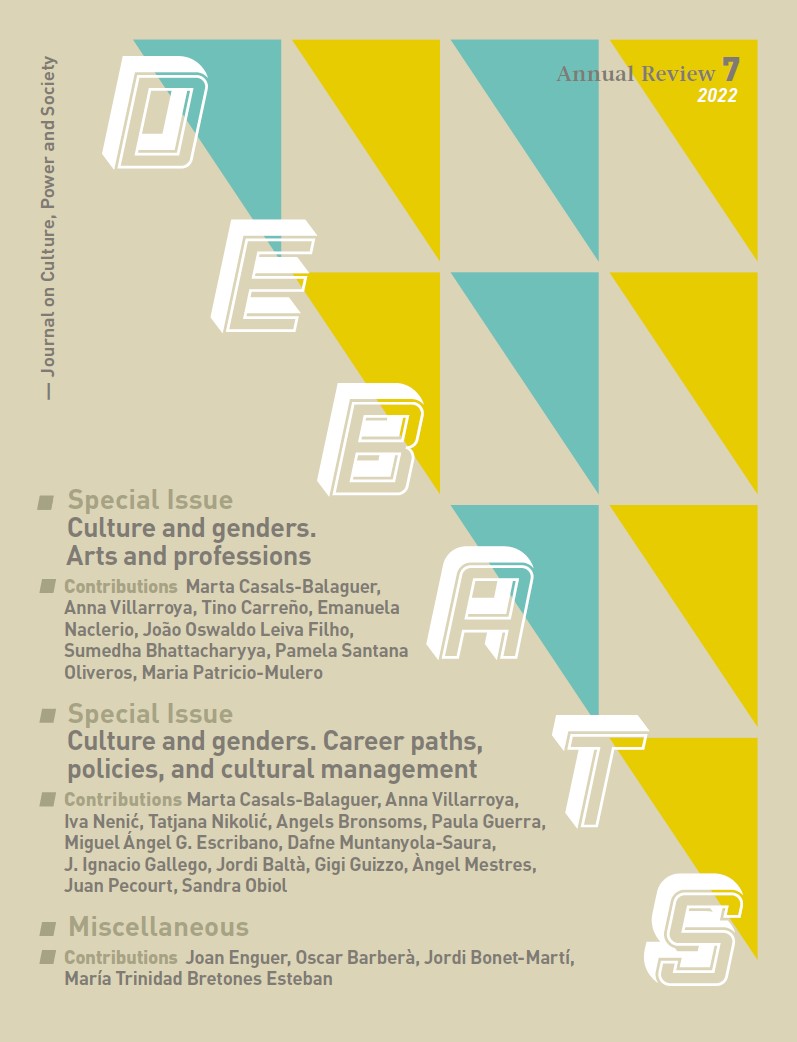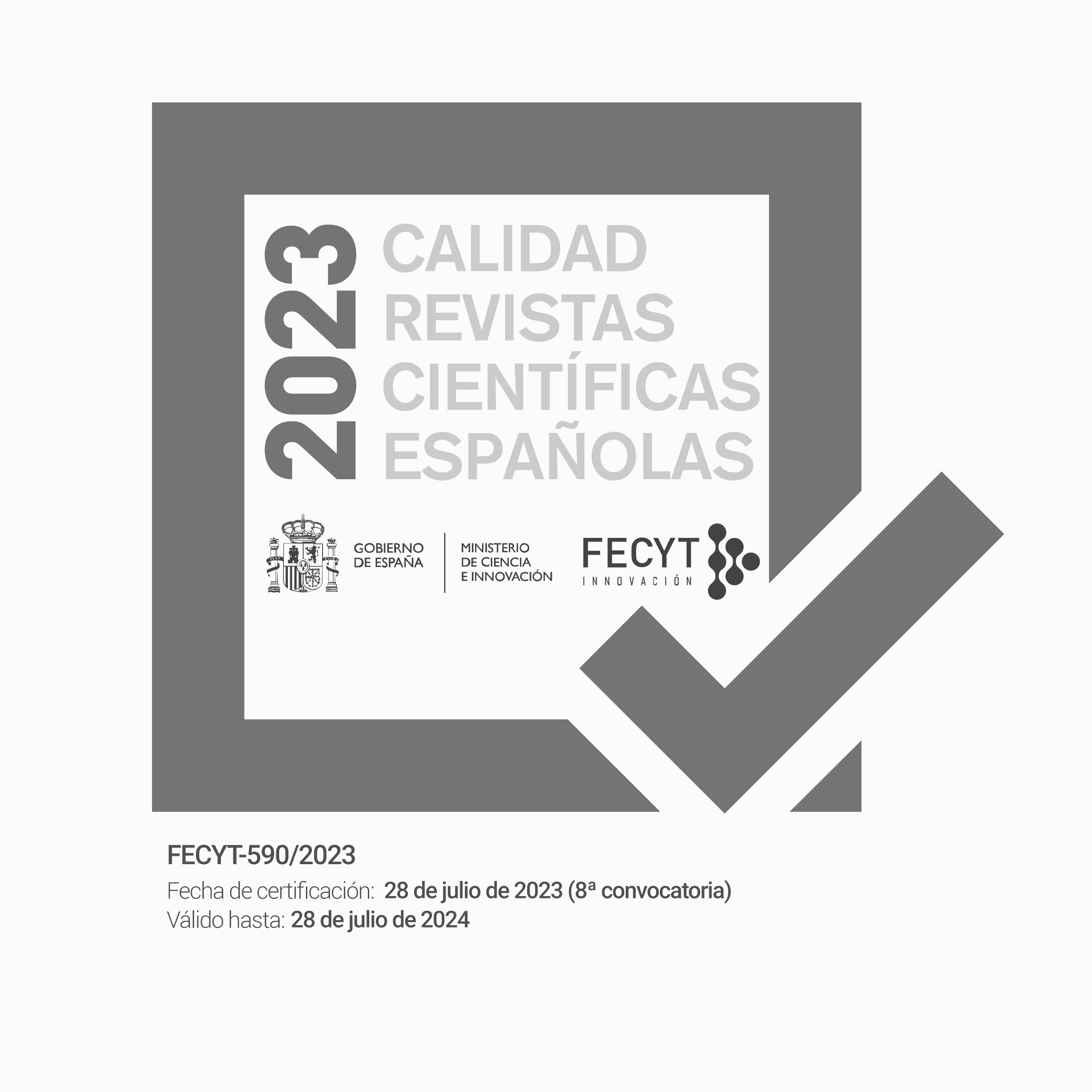Restructuring of the electoral competition in the Autonomous Community of Valencia (2011–2019)
Paraules clau:
electoral spaces, electoral competition, national identity, left–right divide, political parties, Valencian Autonomous CommunityResum
Electoral competition in the Valencian Autonomous Community has long been articulated through the left–right and national identity divides. Although voter identities have generally remained stable over time, some shifts between 2011 and 2019 indeed seemed to be connected to the breakthrough of new political parties. The aim of this article was to show the electoral spaces occupied by new and mainstream political parties in the Valencian region through the last three regional electoral cycles. This, in turn, allowed us to trace the evolution of the main political areas dominated by each party, as well as to highlight spaces in which the electoral competition was more demanding. This Valencian case study shows the limitations of theories of party competition based on exclusive control of the electoral space by some political parties.
Descàrregues
Referències
Abellán, M.A., y Pardo, G.P. (2018). La nueva configuración del sistema de partidos valenciano. Una aproximación
institucionalista. Convergencia, Revista de Ciencias Sociales, 77, 175-200. DOI: 10.29101/cres.v25i77.9200
Bartomeus, O. (2003). La competencia política en la España de las autonomías. Barcelona: Institut de Ciències Polítiques
i Socials.
Bartomeus, O. (2015). La transformació de l’espai polític català 2004-2014. Quadern, 10. Barcelona: Institut de
Ciències Polítiques i Socials.
Bartomeus, O., y Medina, L. (2011). La competencia entre los partidos: ¿síntomas de cambio? En J. Marcet y X.
Casals (eds.), Partidos y elecciones en la Catalunya del siglo xxi (p. 155-190). Barcelona: Institut de Ciències
Polítiques i Socials.
Bernardo, J. M., y López, R. (1991). Comunitat Valenciana: Resultats provisionals de les eleccions 1991, 1993, 1994, 1995.
Generalitat Valenciana, Departament d’Estadística, Presidència.
Blyth, M., y Katz, R. (2005). From Catch-all Politics to Cartelisation: The Political Economy of the Cartel Party. West
European Politics, 28(1), 33–60. DOI: 10.1080/0140238042000297080
Dalton, R. J. (2014). Citizen Politics. Public opinion and political parties in advanced industrial democracies. Thousand
Oaks, California: Sage/CQPress.
Dalton, R. J., y Welzel, C. (2013). The civic culture transformed: from allegiant to assertive citizens. Cambridge: Cambridge
University Press. DOI: 10.1017/CBO9781139600002
Downs, A. (1957). An economic theory of democracy. Nueva York: Harper & Bros.
Elias, A., Szöcsik, E., y Zuber, C. I. (2015). Position, selective emphasis and framing: How parties deal with a second
dimension in competition. Party Politics, 21(6). DOI: 10.1177/1354068815597572.
Enelow, J., y Hinich, M. (eds.) (1984). The Spatial Theory of Voting: An Introduction. Nueva York: Cambridge University
Press.
Evans, J. A. (2004). Voters and Voting. Londres: Sage Publications.
Franch, V. (1998). Las elecciones autonómicas en la Comunitat Valenciana. En M. Alcántara, y A. Martínez (eds.),
Las elecciones autonómicas en España, 1980-1997 (p. 445-501). Madrid: Centro de Investigaciones Sociológicas.
Franch, V., y Martín Cubas, J. (2000). Eleccions, partits i sistemes de partits a la Comunitat Valenciana. En R.L.
Ninyoles (ed.), La societat valenciana: estructura social i institucional. Alzira: Bromera.
Harrop, M., y Miller, W. L. (1987). Elections and voters: a comparative introduction. Nueva York: The Meredith Press.
DOI: 10.1007/978-1-349-18912-0
Inglehart, R. F. (1977). The Silent Revolution Changing Values and Political Styles Among Western Publics. Princeton,
Nueva Jersey: Princeton University Press. DOI: 10.1017/CBO9781107415324.004.
Katz, R. S., y Mair, P. (1995). Changing Models of Party Organization and Party Democracy: The Emergence of the
Cartel Party. Party Politics, 1(1), 5–28. DOI: 10.1177/1354068895001001001
Katz, R. S., y Mair, P. (2018). Democracy and the cartelization of political parties. Oxford University Press.
Kitschelt, H. P. (1994). The transformation of European Social Democracy. Cambridge: Cambridge University Press.
DOI: 10.1017/CBO9780511622014
Martín Cubas, J. (2007). Los espacios de competencia electoral en la Comunidad Valenciana (1995-2005). Cuadernos
constitucionales de la Cátedra Fadrique Furió Ceriol, 60/61
Medina, L. (2014). Más partidos y más polarización. Los cambios en la competencia electoral en Cataluña. Quadern, 05.
Barcelona: Institut de Ciències Polítiques i Socials.
Medina, L. (2015). Izquierda y derecha en España: un estudio longitudinal y comparado. Madrid: Centro de Investigaciones
Sociológicas.
Mezquida, A. (2015) El valencianisme enfront d’Espanya. España: Fundació Nexe
Molas, I., y Bartomeus, O. (1998). Estructura de la competència política a Catalunya. Working Paper, 138. Barcelona:
Institut de Ciències Polítiques i Socials.
Molas, I., y Bartomeus, O. (1999). Els espais de frontera entre els electorats. Estructura de la competència política a
Catalunya (II). Working Paper, 165. Barcelona: Institut de Ciències Polítiques i Socials.
Molas, I., y Bartomeus, O. (2001). Estructura de la competencia política en España (1986-2000), Working Paper, 196.
Barcelona: Institut de Ciències Polítiques i Socials
Oñate, P. (2013). Los partidos políticos y los sistemas de partidos en la Comunidad Valenciana. En J.M. Canales (ed.),
Sistema político de la Comunidad Valenciana. València: Tirant lo Blanch.
Rabinowitz, G., y Macdonald, S. (1989). A directional theory of voting. American Political Science Review, 83, 93–121.
DOI: 10.2307/1956436
Roig, R. (2019). Del bipartidismo al pentapartidismo: Nueva dinámica ideológica. En Una vida dedicada al Parlamento:
Estudios en Homenaje a Lluís Aguiló i Lúcia (p. 491-508). València: Corts Valencianes.
Descàrregues
Publicades
Com citar
Número
Secció
Llicència
Sense perjudici del que disposa l'article 52 de la Llei 22/1987 d'11 de novembre de Propietat Intel·lectual, BOE del 17 de novembre de 1987, i conforme a aquest, els/les autors o autores cedeix/en a títol gratuït els seus drets d'edició, publicació, distribució i venda sobre l'article, per tal que siga publicat a Debats. Revista sobre cultura, poder i societat.
Debats. Revista de cultura, poder i societat es publica sota el sistema de llicències Creative Commons segons la modalitat “Reconeixement – NoComercial (by-nc): Es permet la generació d’obres derivades sempre que no se’n faça un ús comercial. Tampoc no es pot fer servir l’obra original amb finalitats comercials”.
Així, quan l’autor/a envia la seva col·laboració, accepta explícitament aquesta cessió de drets d’edició i de publicació. Igualment autoritza Debats. Revista de cultura, poder i societat la inclusió del seu treball en un fascicle de la revista perquè es puga distribuir i vendre.











